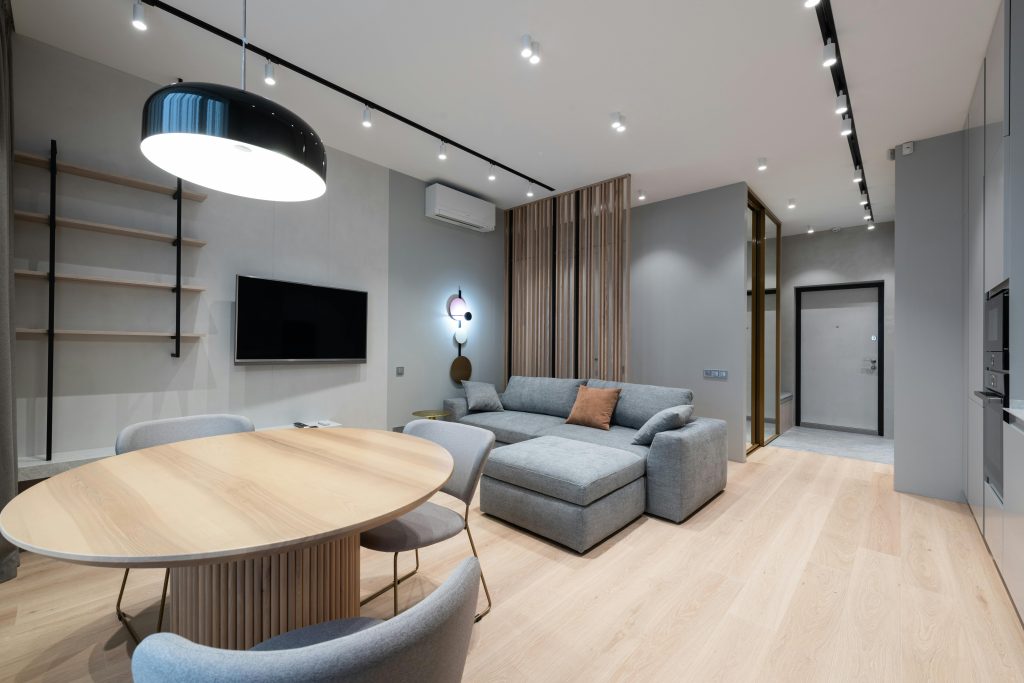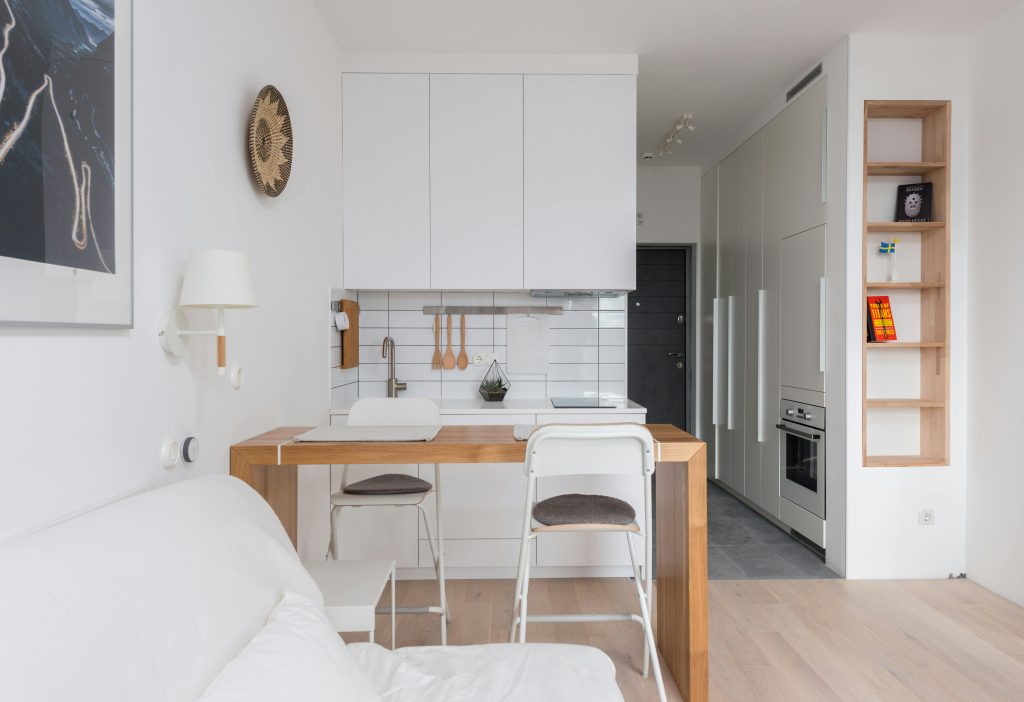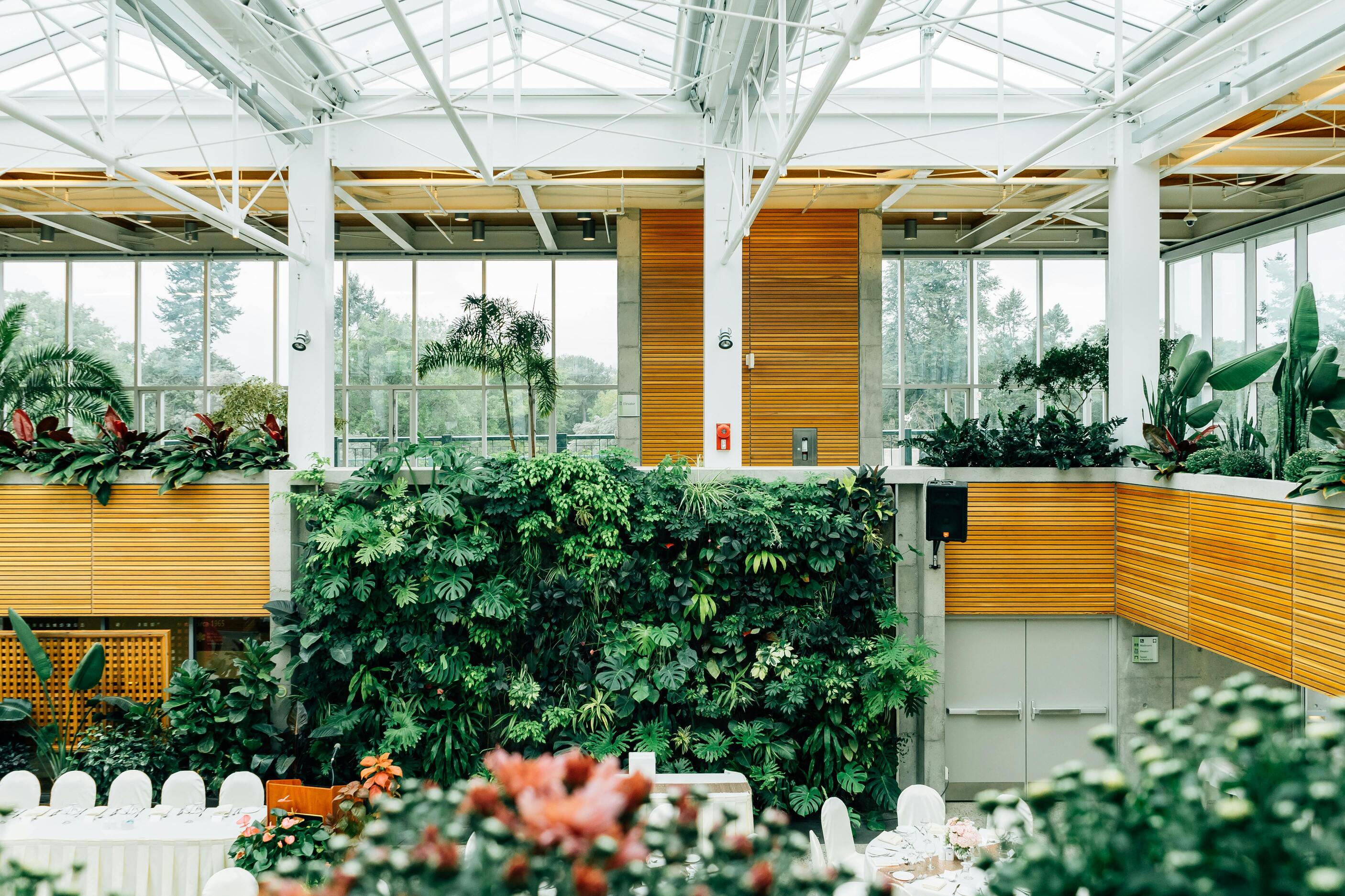Architecture and interior design have undergone a radical transformation in recent decades. Increasing urbanization and space scarcity in major cities have given rise to a trend that, far from being a limitation, has become a true revolution: micro-spaces. These small homes, often under 40 square meters, have evolved to offer not only functionality but also an unprecedented luxury experience. In this article, we will explore how this fusion of luxury and efficiency has been achieved and which materials and designs are setting the trend.
The Evolution of Micro-Spaces
Historically, small spaces were associated with limited resources and a lower quality of life. However, today, designers and architects have transformed this perception, turning micro-spaces into true architectural gems. The key to this change lies in maximizing available space and intelligently utilizing every square centimeter.

Multifunctional Design
Multifunctional design is one of the fundamental pillars in creating luxurious micro-spaces. Transformable furniture, such as sofa beds, extendable tables, and built-in wardrobes, allows a single room to serve multiple purposes without sacrificing comfort or aesthetics. Smart storage solutions, like modular shelving and beds with integrated drawers, optimize space and eliminate clutter.
High-Quality Materials
The use of high-quality materials is essential to convey a sense of luxury in micro-spaces. The selection of fine woods, marble, stainless steel, and glass not only ensures durability but also adds a sophisticated aesthetic. These materials, combined with impeccable finishes, create an environment that exudes elegance and exclusivity.
Technology and Connectivity
Technology has played a crucial role in the micro-space revolution. The integration of smart home systems allows lighting, climate control, and security to be managed via mobile devices. This not only enhances convenience but also optimizes energy consumption, contributing to sustainability.

Compact and Efficient Appliances
In a small home, appliance selection is critical. Compact, multifunctional models—such as washer-dryers and integrated refrigerators—help save space without sacrificing performance. Additionally, energy efficiency becomes a priority, reducing both environmental impact and operational costs.
Smart Lighting
Lighting is another vital aspect of micro-space design. Intelligent lighting systems, which allow for adjustable brightness and color temperature, significantly enhance the quality of the space. LED lights, besides being energy-efficient, offer aesthetic versatility that adapts to any design style.
The Role of Personalization
Customization is a decisive factor in transforming a small home into a luxurious space. The ability to tailor elements to individual needs and tastes creates a unique and exclusive environment. From color and texture choices to bespoke decorative pieces, every detail matters in achieving a cohesive and harmonious design.
Open Spaces and Fluid Layouts
One of the most effective strategies in micro-space design is the creation of open layouts that promote fluid movement. Eliminating unnecessary walls and using movable partitions allow natural light to spread evenly, visually expanding the space. This sense of openness, combined with minimalist decor, fosters a relaxing and sophisticated atmosphere.

Details That Make the Difference
In interior design, it’s the details that make all the difference. In micro-spaces, every element must be carefully selected and placed to maximize its impact. From cabinet handles to light switches, each component should reflect a coherent style and contribute to the sense of luxury.
Current Trends in Micro-Spaces
Today’s micro-space trends are influenced by a combination of social, economic, and environmental factors. Sustainability, efficiency, and well-being are key concepts guiding design decisions.
Sustainability and Eco-Friendly Materials
The use of eco-friendly materials and sustainable construction techniques has become a priority. Recycled materials, low-VOC paints, and renewable energy solutions are just a few examples of how micro-spaces can be both luxurious and environmentally responsible.
Japandi Influence
The influence of Japandi—a fusion of Japanese and Scandinavian design—is evident in micro-space creation. This trend is characterized by minimalism, functionality, and natural materials. The simplicity and serenity of this style align perfectly with small-space design principles, resulting in balanced and elegant environments.

Augmented Reality Technology
Augmented reality (AR) is revolutionizing the way we design and live in micro-spaces. Through AR applications, users can visualize and plan their home layouts with millimeter precision, optimizing every corner and ensuring each element fits perfectly.
Conclusion
The micro-space revolution has proven that luxury and functionality are not at odds with size. Thanks to advancements in technology, multifunctional design, and meticulous attention to detail, small homes can offer exceptional quality of life. By combining high-quality materials, customization, and sustainability, these spaces have become a benchmark in interior design. Thus, micro-spaces are not just a practical solution to space constraints but also an expression of style and sophistication, reflecting the aspirations of an ever-evolving society.

